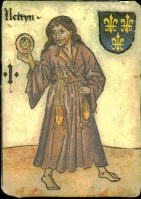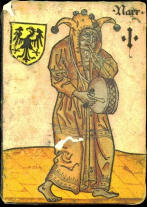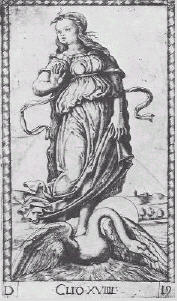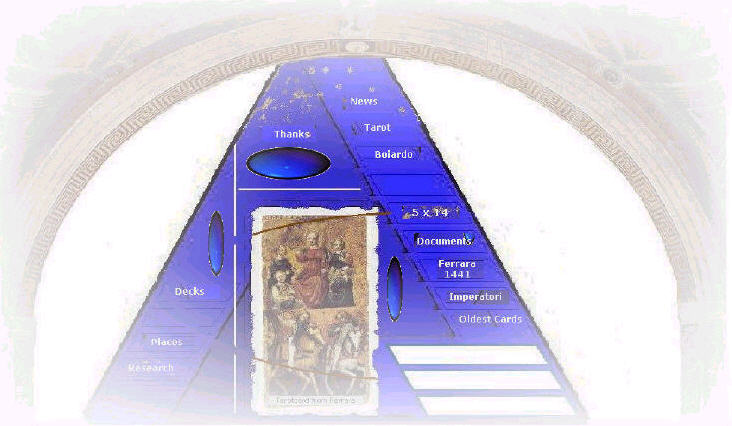About us(by autorbis)Free from Memoryca. 1st of May 1989 - 15th of May 1989The 5x14-theory is born after reading Stuart's Kaplan Tarot-Encyclopedia I within 2 weeks. In my opinion of that time the theory had a chance of 99 % probability to be true. It followed a longer time to study historical details of the Italian renaissance, which was quite an unknown field before. October 1989 and later Contacts to German publishers ended with frustrations. Nobody was interested in the theme. Private contacts to some playing cards experts (Kaplan, Hoffmann) ended without results. 1996 Internet started. Activities in alt.tarot and TarotL. Contacts to Jess Karlin, Bill Heidrick, George Leake, Mary Greer, Bob O'Neill and others. Generally I perceived that I had difficulties to communicate the complexity of my considerations. March/April 1997 At a private emaillist I suggested the 5x14-theory. Most participants didn't get the level to discuss it really, Bob O'Neill took a longer interest, but rejected it finally. A contact to Michael Dummett ended resultless, he suggested, that I should publish my theory, I felt, that he didn't enter a real discussion of the details in the related matter. April/May 2002 After a long pause of the theme "Tarot" I took contact to Franco Pratesi, who made me known with his works about the Michelino-deck and his studies in Florence, also with other facts about early playing card research. Franco was very friendly and discussed with me many details of my own theory via email. I realised, that Marcello in his letter didn't show any curiosity about the unusual Michelino-deck with its 16 trump cards and did call it a "ludus triumphorum", a name, which in common playing card research was seen as sign of playing card decks with 4x14+22-structure. In this case the use of the term was different and the observation gave additional strength to the 5x14-theory. October 2002 I became aware, that in one of Pratesis texts a note about "70 cards" was given with a reference to an article of Gherardo Ortalli. Gherardo Ortalli was later so friendly to make his text available to us. Begin January 2003 The article to the 5x14-theory (in the meantime only a little changed and updated) was published in the web at http://geocities.com/autorbis , the old address of Trionfi.com and now located at http://trionfi.com/01/f/ . It was made known to the public at 4th of January in the group TarotL. There were some reactions, even some positive one, which was much, considering earlier difficulties to communicate the object. Ross Caldwell, to whom I'd become acquainted short before, replied at the 5th of January: "I had indeed thought along these lines of a 5x14 structured deck - although I hadn't worked out the details like you have. But we can discuss this on TarotL." From this first step towards cooperation soon a fruitful correspondence resulted, especially as Ross was interested in matters for which I obviously had been too lazy for and tings, for which I had not enogh background to: Running in the libraries, fighting with old and foreign languages. March 2003 Together with Alain Bougeareal we did build the yahoogroup LTarot. Others came and discussed with us. Ross detected the "14 figure" note in the Francesschini-text. April 2003 The domain Trionfi.com is taken. But the new technique demands some basic understanding of html, so the actual work at it starts at July/August in a very hot summer 2003. (24th of August, 2003) Welcome The main object at the beginning of Trionfi.com was my own theory about a 5x14-Trionfi-deck in the early stage of development of the Tarocchi, later called the Tarot. The theory is presented still in fragmentarious form under the point about the Pierpont-Morgan-Bergamo deck, 5x14 (above). A lot of other points have gathered in the meantime, more than I've dreamt of in the beginning of the site some monthes ago. But now a growing group of interested persons has developed and a lot of things are done in community. We profit very much from the work of Ross Gregory Caldwell and his abilities with old languages. Mari Hoshizaki has concentrated on the backgrounds of Ferrara, which is the city with the greatest Trionfi background, as far it is known. Huck Meyer has dedicated to promote the site in the outside, Jane Cocker is specialised on Boiardo. Ray Luberti is our secret help in Italian matters. Many others have arrived participating in our activities, helping with discussions, opinions and informations. So we build groups to concentrate specific themes and do communicate in exhaustive manner - it's hard to say in the end, who should be honoured for "writing" an article. At this moment the site is - more or less - still in preparation just to discuss specific contents with friends and others with interests in the early history of Tarot. We're working hard, but probably all will need a little time. So probably you'll find here constantly loose ends, things in development, great plans, which still aren't finished yet. But that's the life in research and we do enjoy it. It is my hope, that the site will soon develop in further aspects, becoming a most timely center of the research of the object. If you're interested to take part in the discussions please contact me or become a member in our Forum If you're interested to get a Newsletter from this site - only send, when something really new happened here, please contact autorbis@yahoo.de August 2003 PS. Various points are UNDER CONSTRUCTION in the moment, I beg for some patience. Trionfi.com is trying to get a new outfit, I hope, soon you'll experience some progress here. JANUARY 2004 (1/2 year later) .... what the cards tell, where they come from .... Researches about the History and Origin of Tarot Cards Time of Origin till ca. 1465 by autorbis, Ross Caldwell, Mari Hoshizaki and many others The site tries to organize the research for the origin and history of Tarot and other playing cards. Already a lot of material is gathered and observed, but realising it in the web is still in the experimental stage. Please excuse, when you occasionally find something, which isn't finished yet ...... the theme Ferrara 1441 is at its beginning and News is not installed yet. The 5x14-theory is important, it is our main thesis, but it is presented only in a single article. The reason for this is, that we first try to control all background, if anything appears, that have been overlooked by us, either adding to our conclusion or negating it. Well, it is a long journey ... If it's your first visit, you might be surprized, how much material is here. You'll be not ready with one visit :-), if you're really interested you should bookmark the page. Anyway, welcome. added to above, MARCH 2004 (2 monthes later) Time has passed. Trionfi.com has established, the great phase of “under construction” is more or less gone. But still are holes in our work, free places, things to develop. And this will persist, cause they are so much of them … research is going on and on. Occasionally I’m a little tired. What did we reach? We tried to focus the time of origin of the Tarot Game and fixed the date on "till ca. 1460". We’re ready to expand after this point of time and occasionally we do, but actually we would prefer to fix first the very early development.
Our group LTarot has expanded, now there are more than 40 people, some calm and listening, others active and cooperating with articles, opinions and informations. Thanks to them all, Trionfi.com is done by many energies. And you're invited to participate. (autorbis) Title August - November 2005
| |||||||||||||||||



